Abstract
Eight strains of yeasts (Candida lipolytica, Debaryomyces hansenii, Hansenula anomala, Kloeckera apiculata, Lodderomyces elongisporus, Rhodotorula rubra, Saccharomyces cerevisiae, and Torulopsis glabrata) were examined for changes in sensitivity to eight essential oils of plants (allspice, cinnamon, clove, garlic, onion, oregano, savory, and thyme) after being sublethally heat stressed. With the exception of garlic oil for all test yeasts, onion oil for S. cerevisiae, and oregano oil for R. rubra, the essential oils at concentrations of up to 200 ppm in recovery media did not interfere with colony formation by unheated cells. However, some oils, at concentrations as low as 25 ppm in recovery media, reduced populations of sublethally heat-stressed cells compared to populations recovered in media containing no test oils. This demonstrates that the yeasts were either metabolically or structurally damaged as a result of being exposed to elevated temperatures and that essential oils prohibited repair of injury. The size (diameter) of colonies produced on oil-supplemented recovery agar by heat-stressed cells was reduced compared to that observed on unsupplemented agar. Pigment production by heated R. rubra was inhibited by oils of oregano, savory, and thyme, but enhanced by garlic and onion oils. The influence of essential oils on survival of yeasts in thermally processed foods and in the enumeration of stressed cells in these foods should not be minimized.
Full text
PDF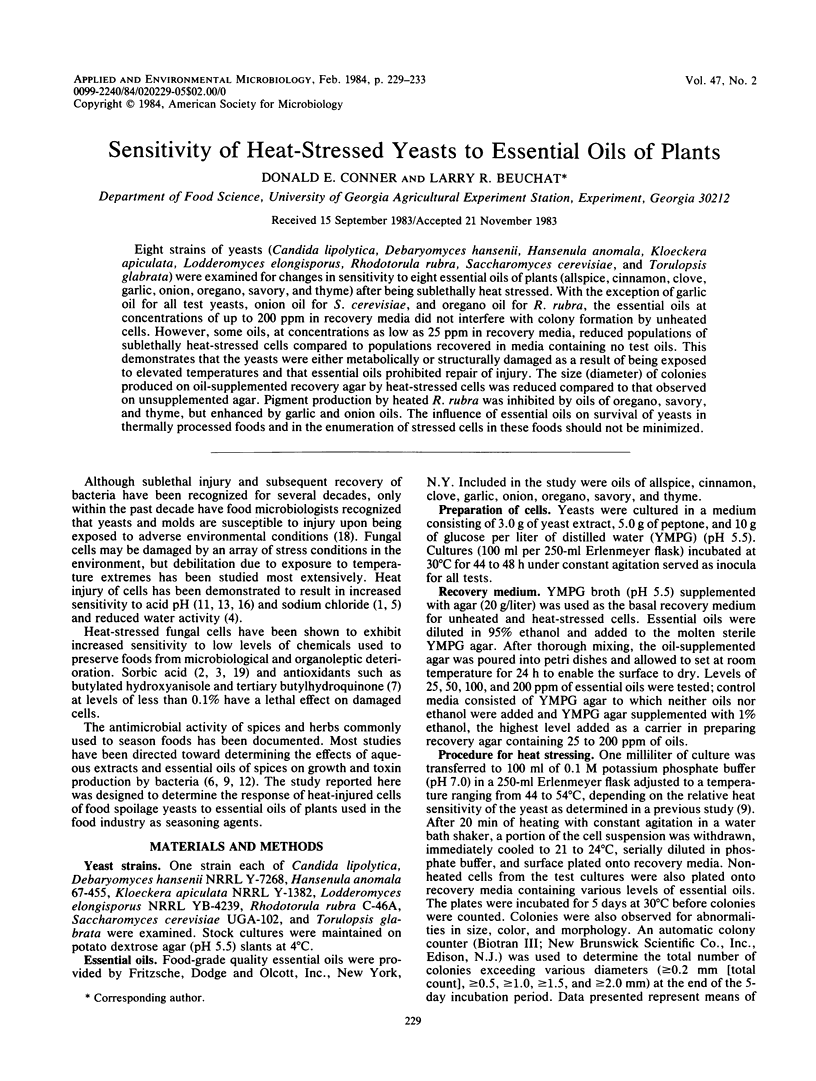
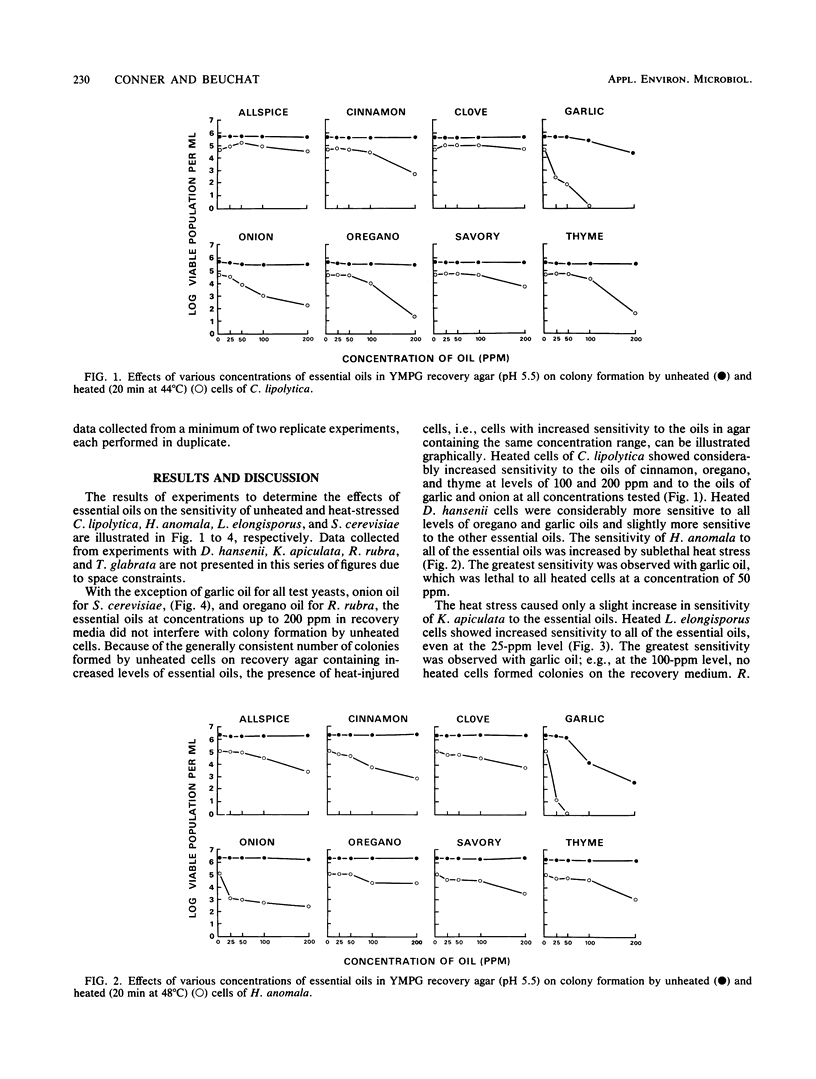
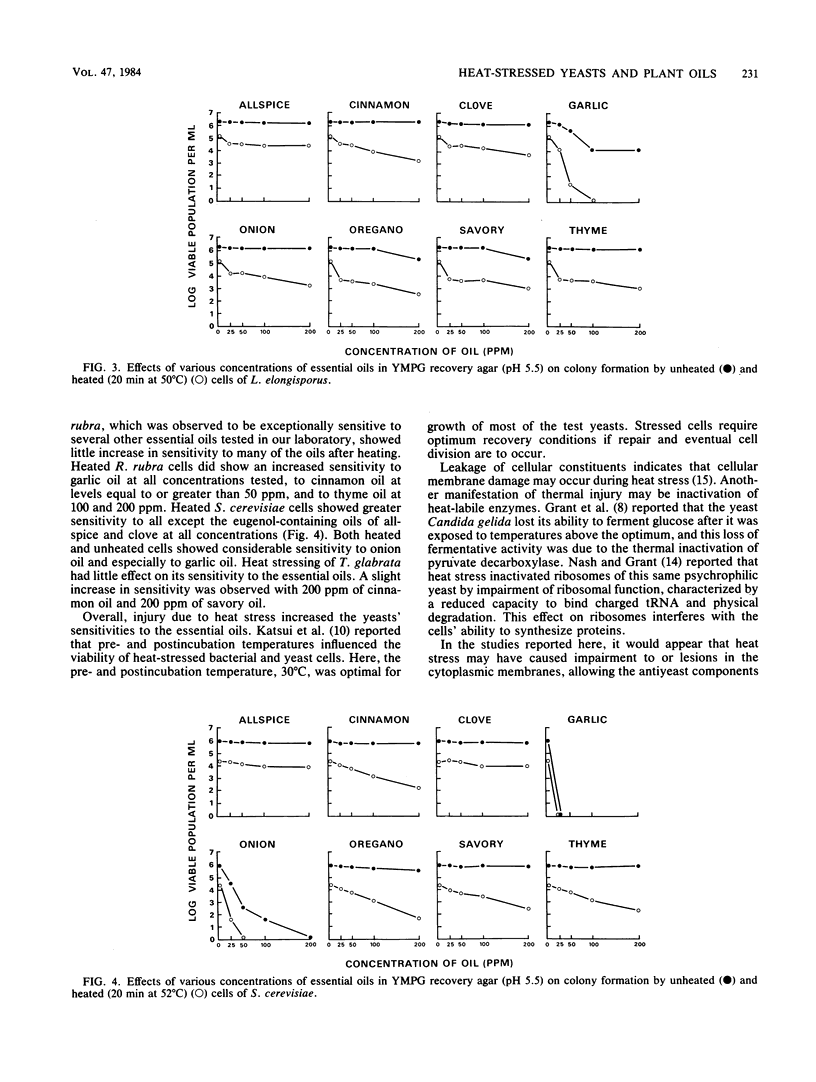
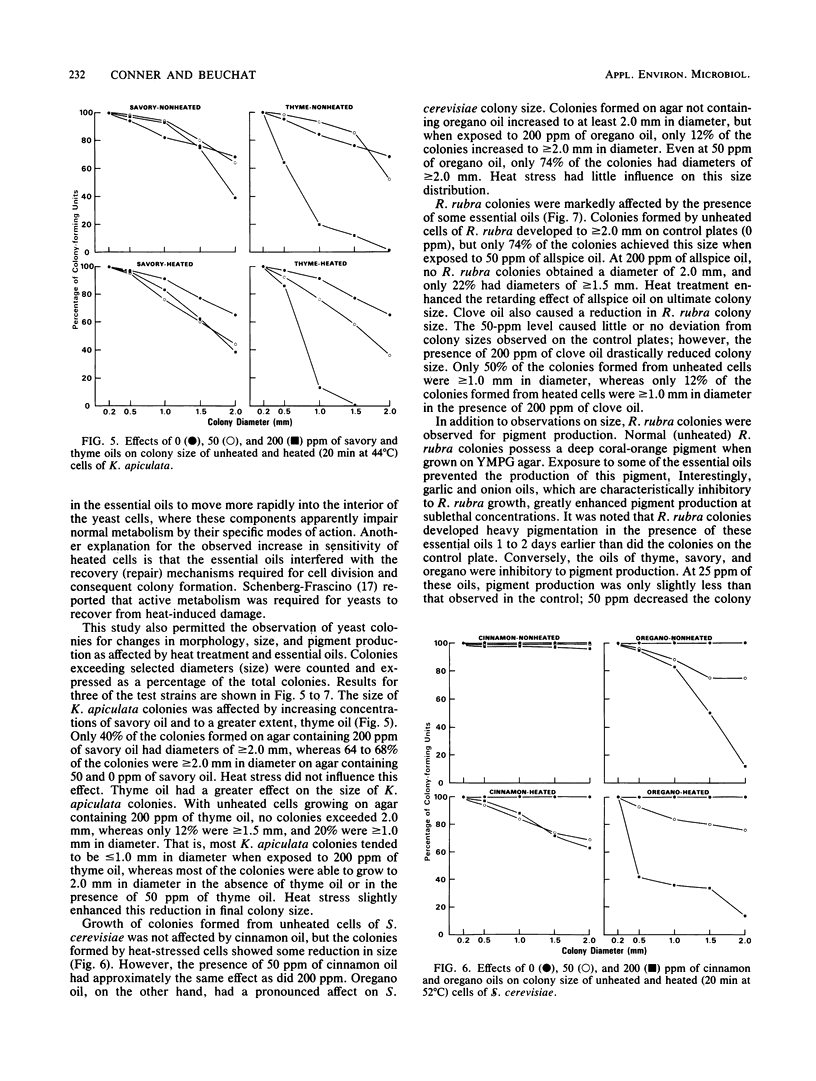
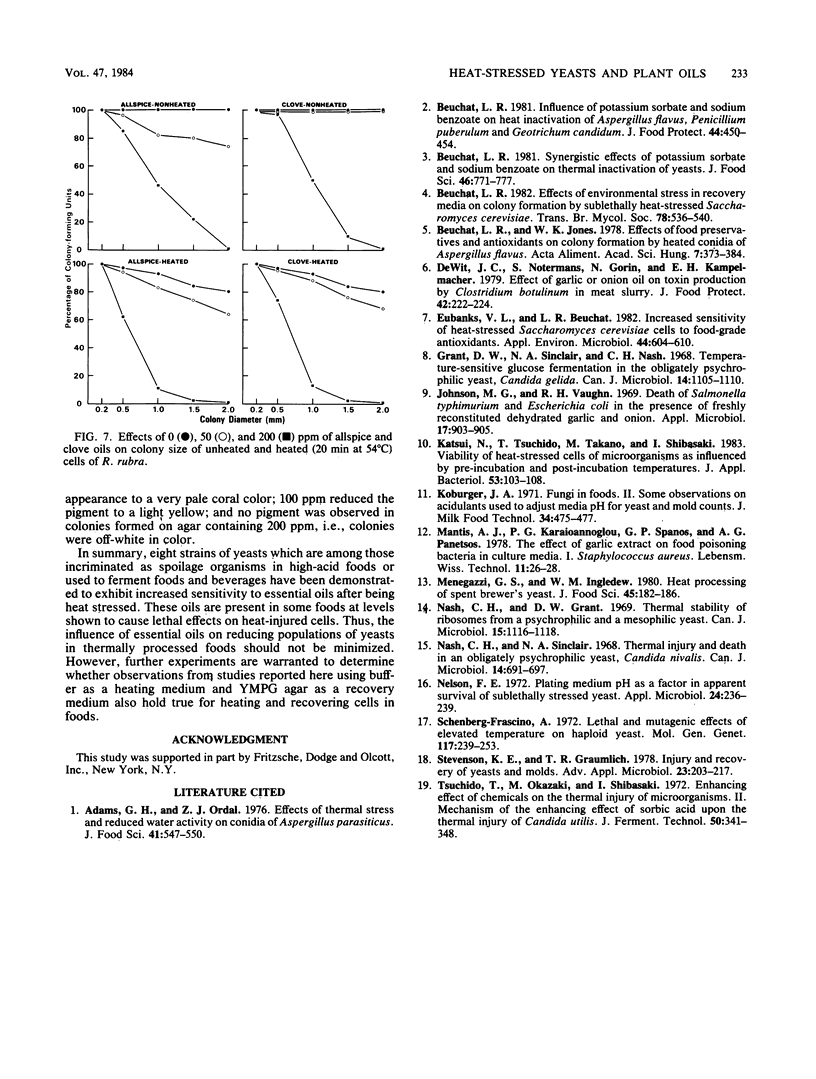
Selected References
These references are in PubMed. This may not be the complete list of references from this article.
- Eubanks V. L., Beuchat L. R. Increased sensitivity of heat-stressed Saccharomyces cerevisiae cells to food-grade antioxidants. Appl Environ Microbiol. 1982 Sep;44(3):604–610. doi: 10.1128/aem.44.3.604-610.1982. [DOI] [PMC free article] [PubMed] [Google Scholar]
- Grant D. W., Sinclair N. A., Nash C. H. Temperature-sensitive glucose fermentation in the obligately psychrophilic yeast Candida gelida. Can J Microbiol. 1968 Oct;14(10):1105–1110. doi: 10.1139/m68-185. [DOI] [PubMed] [Google Scholar]
- Johnson M. G., Vaughn R. H. Death of Salmonella typhimurium and Escherichia coli in the presence of freshly reconstituted dehydrated garlic and onion. Appl Microbiol. 1969 Jun;17(6):903–905. doi: 10.1128/am.17.6.903-905.1969. [DOI] [PMC free article] [PubMed] [Google Scholar]
- Katsui N., Tsuchido T., Takano M., Shibasaki I. Viability of heat-stressed cells of micro-organisms as influenced by pre-incubation and post-incubation temperatures. J Appl Bacteriol. 1982 Aug;53(1):103–108. doi: 10.1111/j.1365-2672.1982.tb04739.x. [DOI] [PubMed] [Google Scholar]
- Nash C. H., Grant D. W. Thermal stability of ribosomes from a psychrophilic and a mesophilic yeast. Can J Microbiol. 1969 Sep;15(9):1116–1118. doi: 10.1139/m69-201. [DOI] [PubMed] [Google Scholar]
- Nash C. H., Sinclair N. A. Thermal injury and death in an obligately psychrophilic yeast, Candida nivalis. Can J Microbiol. 1968 Jun;14(6):691–697. doi: 10.1139/m68-115. [DOI] [PubMed] [Google Scholar]
- Nelson F. E. Plating medium pH as a factor in apparent survival of sublethally stressed yeasts. Appl Microbiol. 1972 Aug;24(2):236–239. doi: 10.1128/am.24.2.236-239.1972. [DOI] [PMC free article] [PubMed] [Google Scholar]
- Schenberg-Frascino A. Lethal and mutagenic effects of elevated temperature on haploid yeast. II. Recovery from thermolesions. Mol Gen Genet. 1972;117(3):239–253. doi: 10.1007/BF00271651. [DOI] [PubMed] [Google Scholar]
- Stevenson K. E., Graumlich T. R. Injury and recovery of yeasts and molds. Adv Appl Microbiol. 1978;23:203–217. doi: 10.1016/s0065-2164(08)70070-4. [DOI] [PubMed] [Google Scholar]


